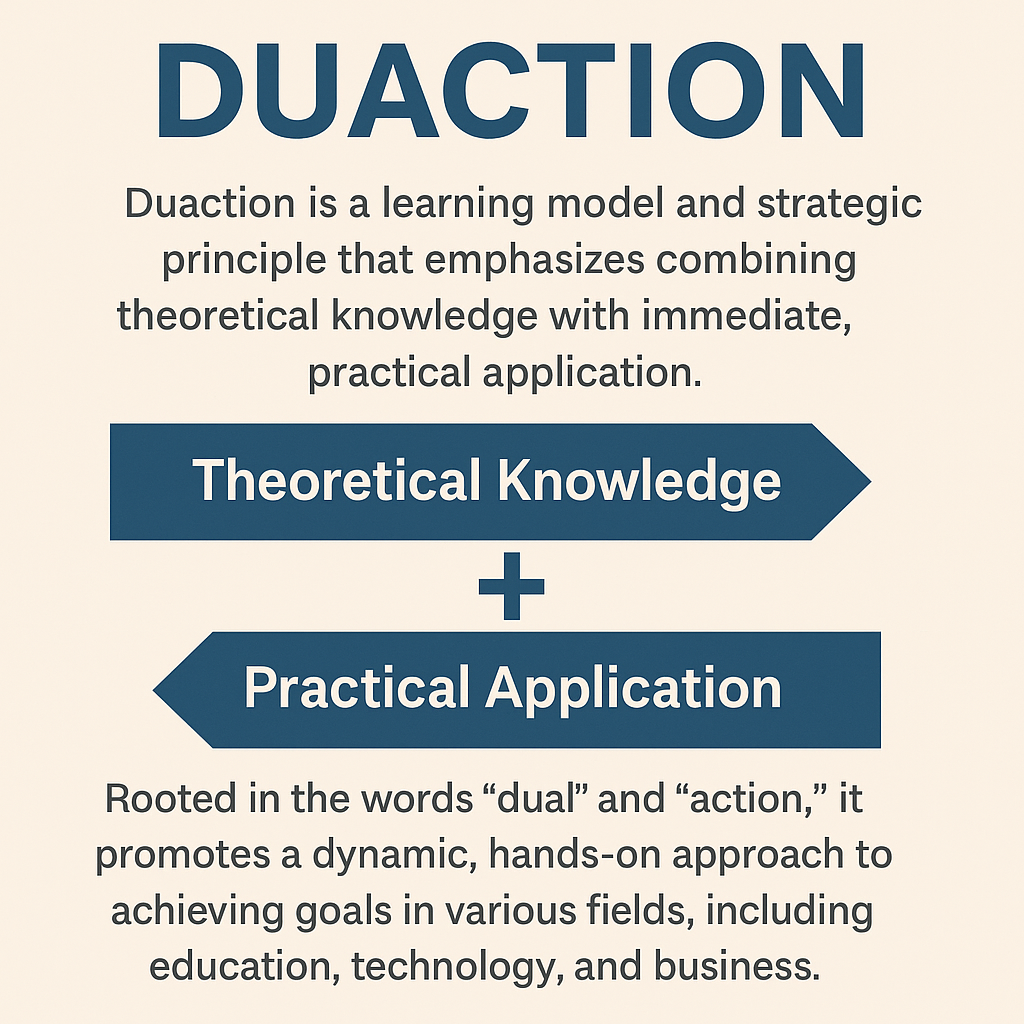The concept of Duaction is gaining attention as a modern approach to learning and strategy. Rooted in the words “dual” and “action,” it blends theoretical knowledge with immediate, practical application. Unlike models that separate classroom learning from real-world execution, Duaction insists on applying ideas the moment they are learned.
This dual approach is proving valuable in education, technology, and business, where speed, adaptability, and hands-on skills are critical.
Duaction in Education
Problem – Theory Without Practice
Traditional education often emphasizes memorization and theory. Students may graduate with degrees but lack the skills to apply their knowledge effectively.
Solution – Learning by Doing
Duaction in education means combining lessons with projects, labs, or real-world problem-solving. For example, engineering students may design prototypes while learning theory. This makes education more engaging and prepares learners for professional challenges.
Duaction in Technology
Problem – Rapid Change Outpaces Knowledge
Technology evolves quickly. By the time theory is learned, tools or platforms may already be outdated.
Solution – Immediate Application of Skills
Duaction in technology encourages applying concepts in coding, AI, or software engineering through hackathons, live simulations, and rapid prototyping. This ensures learners adapt faster and stay relevant in industries driven by innovation.
Duaction in Business
Problem – Strategy Without Execution
In many organizations, leaders focus on planning and strategy but struggle with execution. The gap between theory and action slows growth.
Solution – Dual-Action Business Principles
Duaction in business combines strategic planning with pilot programs, experiments, or quick wins. For example, instead of endless planning for digital marketing, a company may test campaigns while refining strategy in real time. This builds agility and minimizes wasted effort.
Broader Impact of Duaction
Encouraging Lifelong Learning
By blending theory and practice, Duaction supports continuous learning. Workers stay sharp by applying knowledge immediately, preventing skills from becoming stale.
Building Confidence and Competence
Learners gain confidence when they see direct results. This reinforces knowledge retention and improves problem-solving.
Driving Innovation
Whether in education, tech, or business, Duaction pushes for constant innovation. Applying theory quickly sparks creativity and uncovers new solutions.

Comparison Table: Traditional vs. Duaction Model
| Aspect | Traditional Model | Duaction Model |
|---|---|---|
| Focus | Theory first, practice later | Theory + practice together |
| Learning Outcome | Knowledge-heavy, skill-light | Balanced knowledge + skills |
| Adaptability | Slower, rigid | Faster, agile |
| Application | Delayed | Immediate |
| Engagement | Lower, passive | Higher, hands-on |
Key Takeaways in Bullet Points
- Duaction blends theoretical knowledge with immediate practice.
- In education, it connects classroom learning to real-world application.
- In technology, it helps learners adapt to rapid industry change.
- In business, it closes the gap between planning and execution.
- This model improves confidence, engagement, and innovation across fields.
Conclusion
The rise of Duaction highlights a shift in how people learn and lead. By joining theory with action, this model ensures ideas don’t remain abstract but are tested and refined in real time. Whether in classrooms, tech labs, or boardrooms, Duaction helps people stay adaptable, creative, and effective.
As industries continue to evolve, the need for dual-action learning will only grow. Duaction isn’t just a principle—it’s a roadmap for thriving in the modern world.

